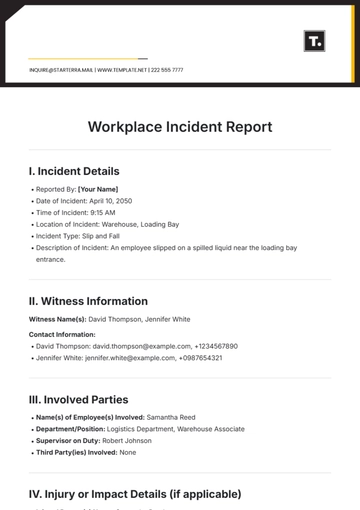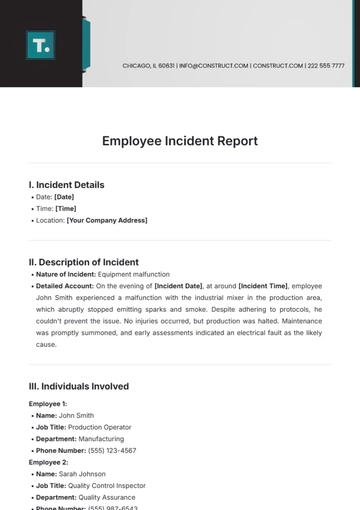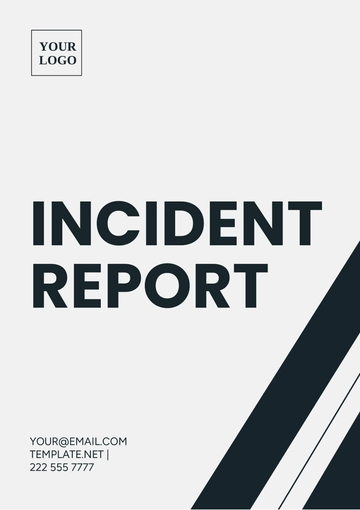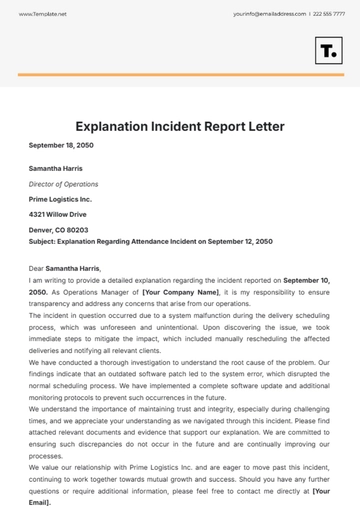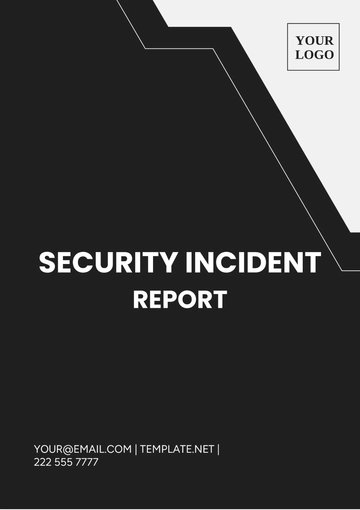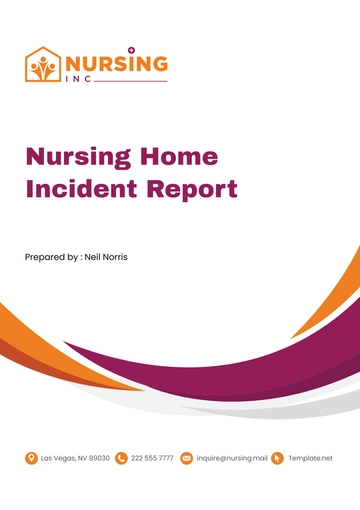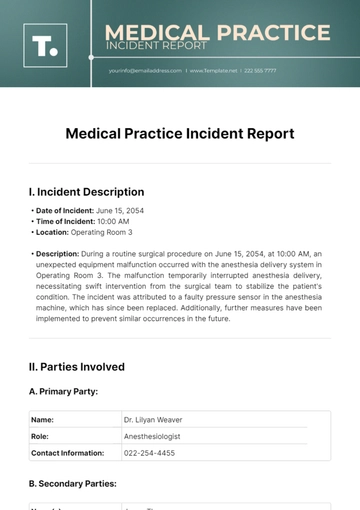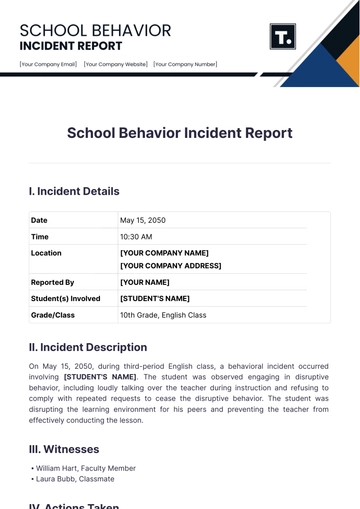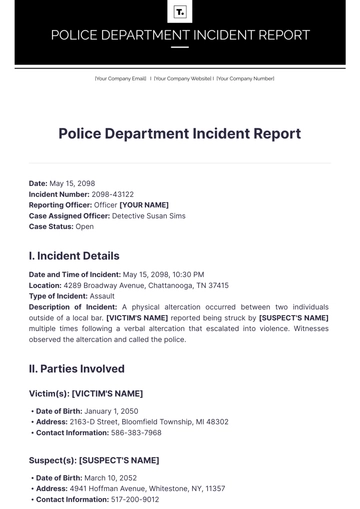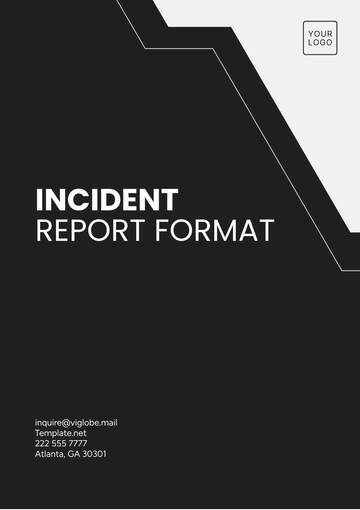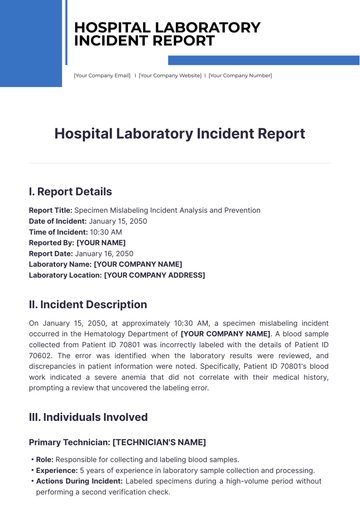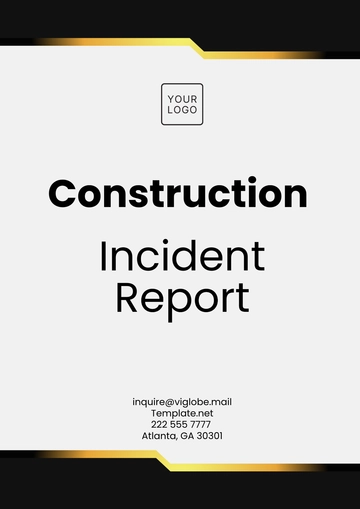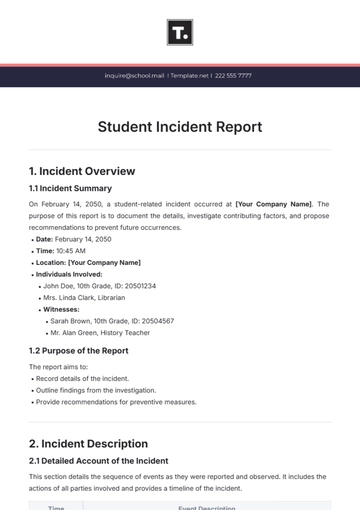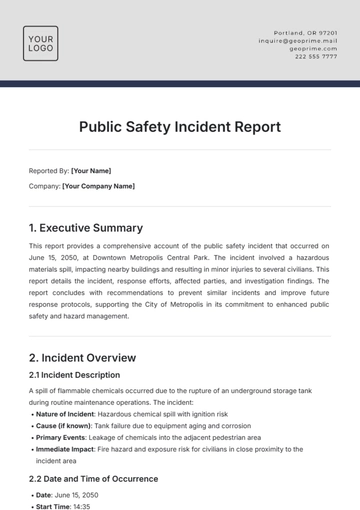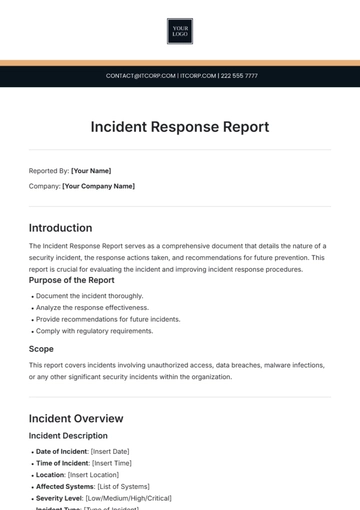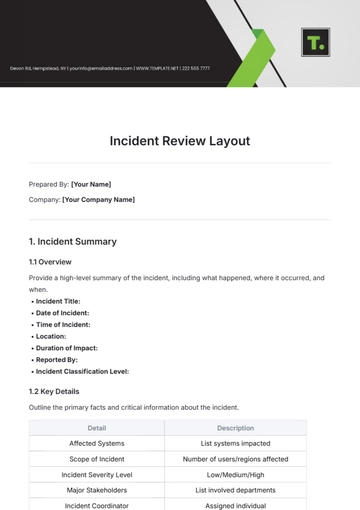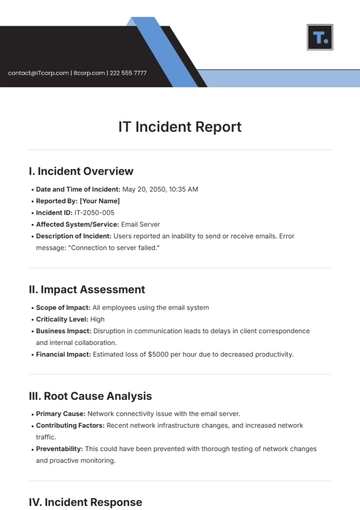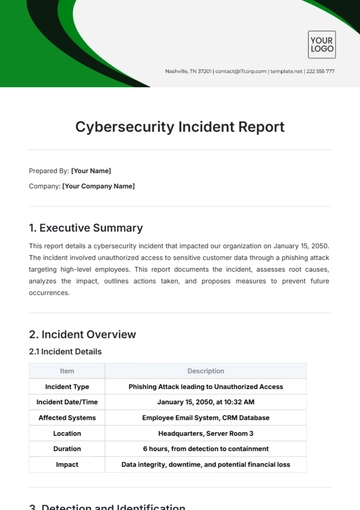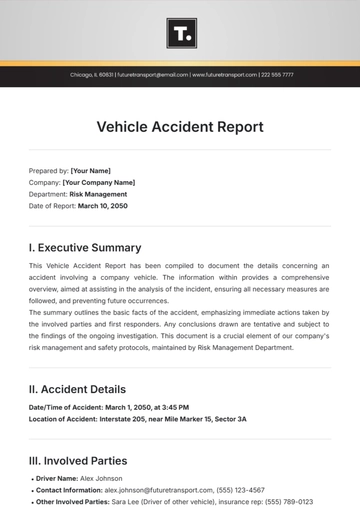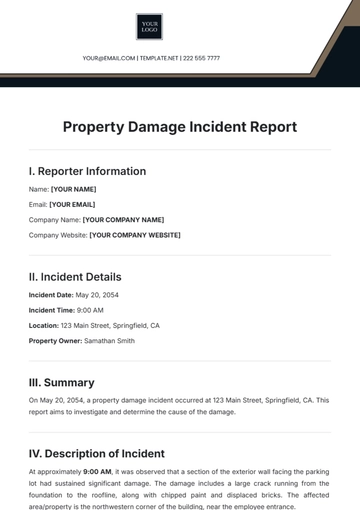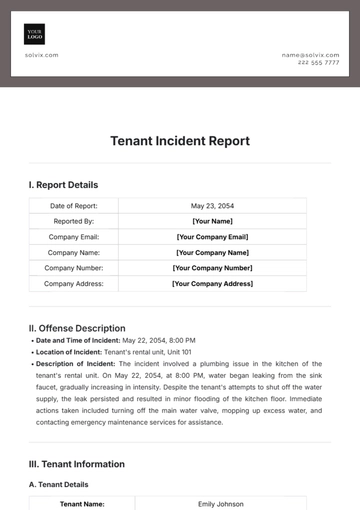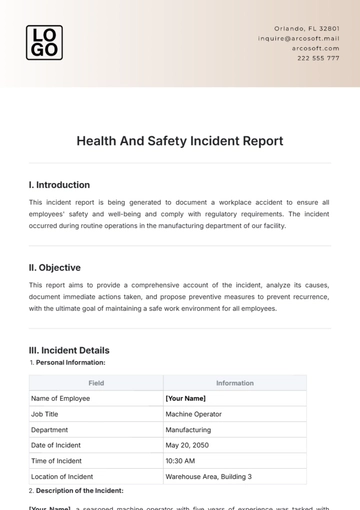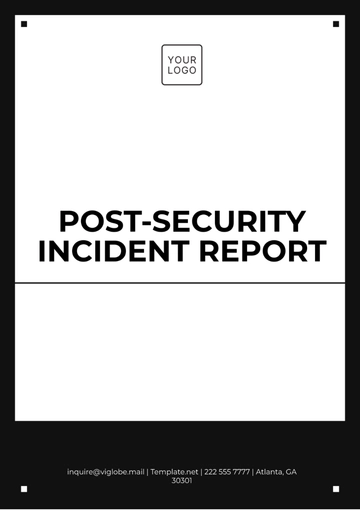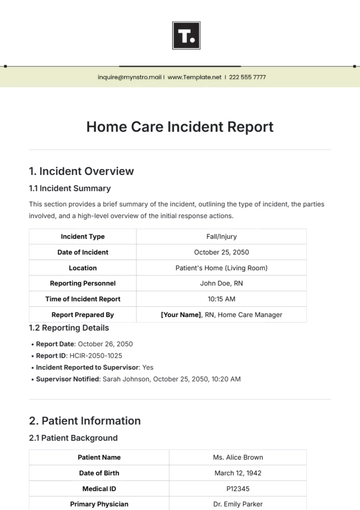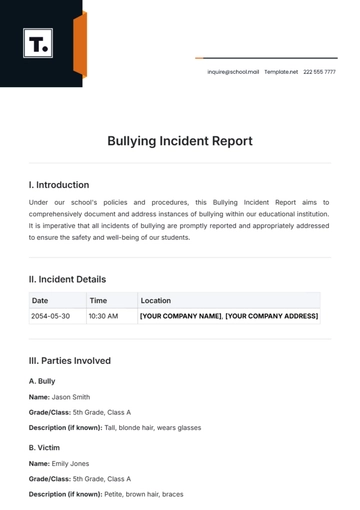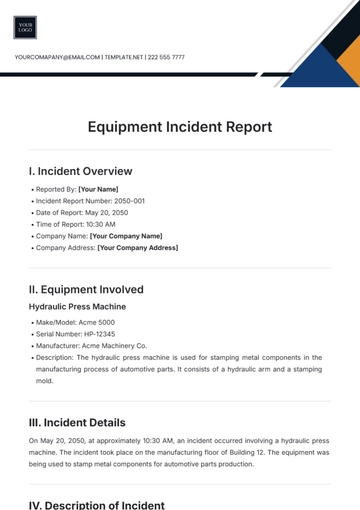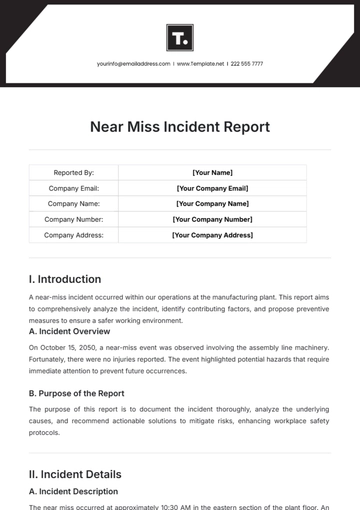Free Fire Drill Report HR
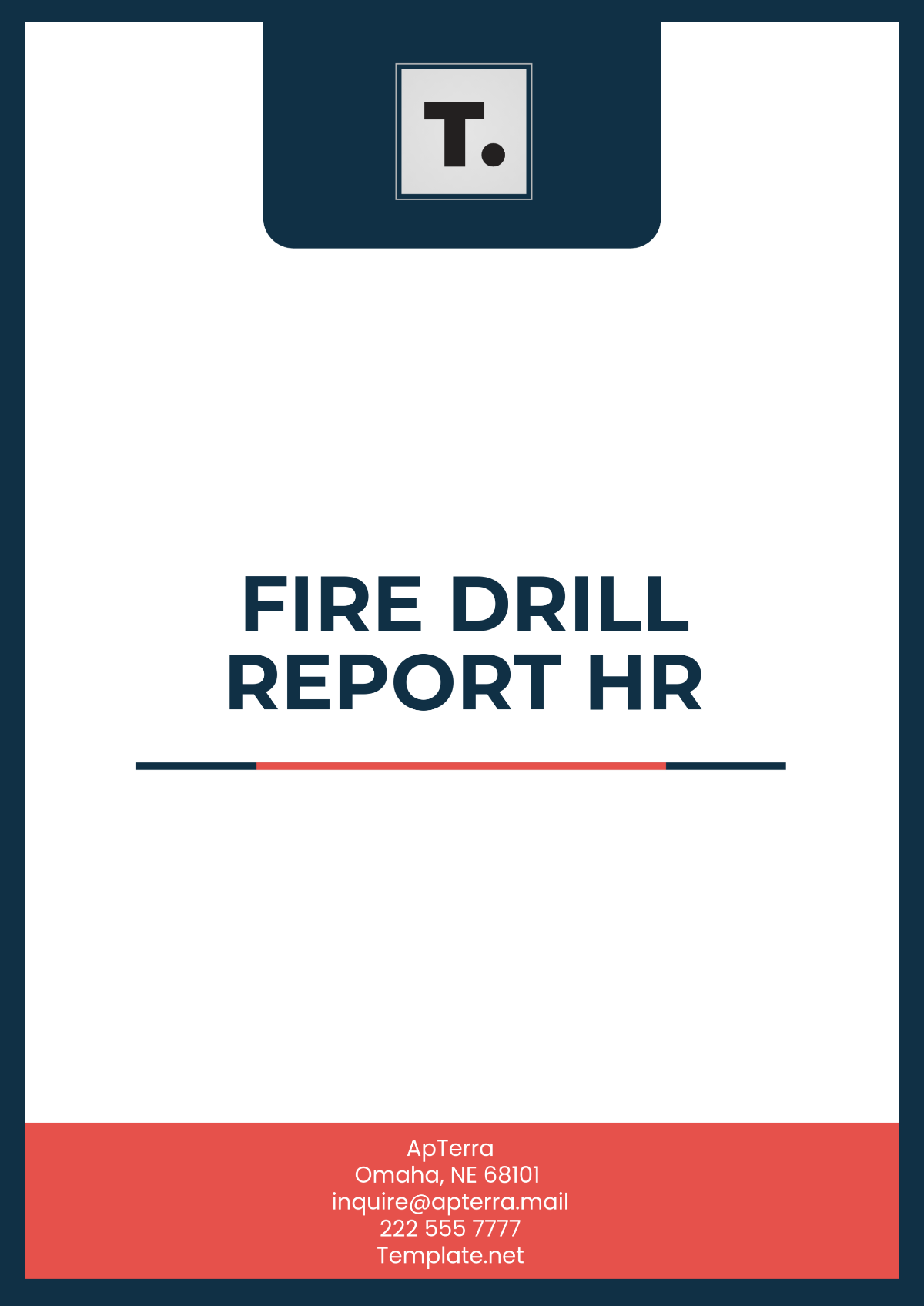
Prepared by: [Your Name]
Company: [Your Company Name]
Date: [Insert Date]
Objective
The primary objective of this report is to document and evaluate the recent fire drill conducted at our premises, focusing on the Human Resources (HR) department's participation and compliance with safety protocols. This report aims to provide insights into the effectiveness of the drill, identify areas for improvement, and recommend actionable steps to enhance emergency preparedness.
Executive Summary
The fire drill conducted on October 10, 2050, was a part of our organization's regular safety exercise initiative. The HR department complied with all safety procedures, contributing to the overall success of the drill. This report outlines the observations, performance analysis, feedback, and recommendations based on the drill’s execution.
Drill Planning and Execution
Preparation
The fire drill was scheduled and communicated to all departments two weeks in advance. The HR department assigned key roles, including floor wardens and safety marshals, to ensure orderly evacuation. Training sessions were held on October 4, 2050, to familiarize employees with emergency procedures and assembly point locations.
Execution Timeline
Time | Activity |
|---|---|
10:00 AM | Alarm Activation |
10:03 AM | Evacuation Begins |
10:07 AM | Building Clear |
10:12 AM | Attendance Check at Assembly Point |
10:20 AM | All Clear Signal Given |
HR Department’s Role
The HR department played a crucial role in ensuring the smooth execution of the drill. Responsibilities included communicating procedures to staff, managing evacuation routes, and conducting head counts at the assembly point. This collaborative effort was vital in managing the workflow during the drill.
Performance Analysis
Strengths
Timeliness: The HR department evacuated all members in under four minutes, showcasing excellent adherence to safety protocols.
Communication: Information was disseminated swiftly across various channels, ensuring that all employees were informed and aware of their roles and responsibilities.
Coordination: The coordination between HR and the safety team was commendable, leading to a seamless operation.
Areas for Improvement
Mobility Assistance: Additional volunteers are needed to assist employees with mobility impairments.
Headcount Accuracy: Accuracy in headcount was slightly compromised due to technical malfunctions in the digital attendance system.
Assembly Point Clarity: Some confusion was observed regarding the location of the secondary assembly point. Further training and clear signage are needed.
Feedback
Employee Feedback
Post-drill surveys were conducted, and the feedback highlighted the efficiency of the drill but stressed the need for clearer instructions regarding personal belongings and weather appropriateness during evacuations. Employees appreciated the pre-drill training sessions and suggested implementing more frequent fire drills to maintain high readiness levels.
Safety Team Feedback
The safety team commended the HR department’s leadership in managing the drill efficiently. However, they advised incorporating advanced simulation technologies to provide a more realistic experience, enhancing the overall preparedness of employees.
Recommendations
Improvement Initiatives
Based on the analysis and feedback, the following recommendations are proposed:
Schedule regular training sessions focused on emergency response for all employees, with a particular emphasis on those requiring mobility assistance.
Upgrade digital systems used for headcounts to ensure reliability and accuracy during emergency drills.
Install additional signage to clearly mark primary and secondary assembly points.
Consider investing in simulation technology to enhance the realism of future drills, ensuring preparedness among all staff members.
Follow-Up Actions
The HR department will follow up on the aforementioned recommendations with the safety team to ensure all action items are addressed promptly. A follow-up drill may be scheduled within the next six months to test enhancements and ensure compliance with the organization's safety standards.
Conclusion
The fire drill executed by the HR department was generally successful, demonstrating significant strengths in communication and coordination. By addressing identified areas for improvement, future drills can achieve greater efficiency and preparedness. Ensuring all employees are equipped with the knowledge and confidence to respond to emergencies is paramount for their safety and the organization’s overall resilience.
- 100% Customizable, free editor
- Access 1 Million+ Templates, photo’s & graphics
- Download or share as a template
- Click and replace photos, graphics, text, backgrounds
- Resize, crop, AI write & more
- Access advanced editor
Enhance workplace safety effortlessly with our Fire Drill Report HR Template from Template.net. This customizable and editable tool streamlines documentation of participant lists, observations, equipment inspections, and corrective actions. Now, easily ensure compliance and bolster safety protocols with this template, editable using our advanced Ai Editor Tool.
You may also like
- Sales Report
- Daily Report
- Project Report
- Business Report
- Weekly Report
- Incident Report
- Annual Report
- Report Layout
- Report Design
- Progress Report
- Marketing Report
- Company Report
- Monthly Report
- Audit Report
- Status Report
- School Report
- Reports Hr
- Management Report
- Project Status Report
- Handover Report
- Health And Safety Report
- Restaurant Report
- Construction Report
- Research Report
- Evaluation Report
- Investigation Report
- Employee Report
- Advertising Report
- Weekly Status Report
- Project Management Report
- Finance Report
- Service Report
- Technical Report
- Meeting Report
- Quarterly Report
- Inspection Report
- Medical Report
- Test Report
- Summary Report
- Inventory Report
- Valuation Report
- Operations Report
- Payroll Report
- Training Report
- Job Report
- Case Report
- Performance Report
- Board Report
- Internal Audit Report
- Student Report
- Monthly Management Report
- Small Business Report
- Accident Report
- Call Center Report
- Activity Report
- IT and Software Report
- Internship Report
- Visit Report
- Product Report
- Book Report
- Property Report
- Recruitment Report
- University Report
- Event Report
- SEO Report
- Conference Report
- Narrative Report
- Nursing Home Report
- Preschool Report
- Call Report
- Customer Report
- Employee Incident Report
- Accomplishment Report
- Social Media Report
- Work From Home Report
- Security Report
- Damage Report
- Quality Report
- Internal Report
- Nurse Report
- Real Estate Report
- Hotel Report
- Equipment Report
- Credit Report
- Field Report
- Non Profit Report
- Maintenance Report
- News Report
- Survey Report
- Executive Report
- Law Firm Report
- Advertising Agency Report
- Interior Design Report
- Travel Agency Report
- Stock Report
- Salon Report
- Bug Report
- Workplace Report
- Action Report
- Investor Report
- Cleaning Services Report
- Consulting Report
- Freelancer Report
- Site Visit Report
- Trip Report
- Classroom Observation Report
- Vehicle Report
- Final Report
- Software Report
